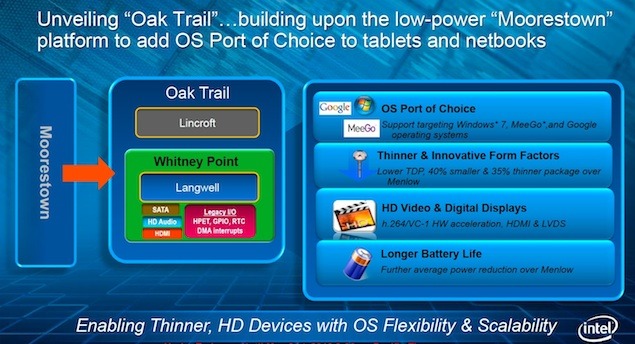Intel VP Paul Otellini recently revealed some of the processor giants plans for the future tablet market. In a conference call Otellini spoke with respect for Apple iPad and its sales, while he pointed out that Intel’s going more aggressive into tablets.
Paul Otellini admitted that tables and not the least Apple iPad will affect PC sales, at least considering its margins. While he did praise Apple for reinventing the tablet with iPad he moved to talk about its own very aggressive venture into tablets.
“We will use all of the assets at our disposal to win this segment,” sade Intels vd Paul Otellini
When Intel talks about using all of its assets you should take notive. The company has once again presented record revenues with the latest breaking into 11 billion dollar. That it will now use its seemingly endless line of resources for a frontal attackt on tables doesn’t have to be a bad thing for Apple – since it might as well use Intel’s platforms – but will most likely mean tougher competition for ARM.
The ARM architecture is used by Apple’s A4 SoC and the majority of other processor circuits available today. To be able to counter ARM in the best possible manner Intel’s new Oak Trail platform will be compatible with a number of different operating systems, beside Windows 7 also Meego and Google Android. Oak Trail will be available in a variety of formfactors and price ranges, which we presume is more or less entirely up to Intel’s partners that will build products on and around the platform.

Paul Otellini compared tablets to netbooks. Where netbooks came from nowhere and quickly grew to a new market, something Intel belives will happen with tablets. The goal is to have its circuits in as many products as possible and it emphasized that it not only has the performance to its advantage but also the compatibility of Windows.
The chip used by Oak Trail, Lincroft, will be replaced by Penwell next year when Medfield arrives. A platform that looks to offer rigorous performance, which could be very much needed with the fast development of the ARM architecture.
Source: CNET















